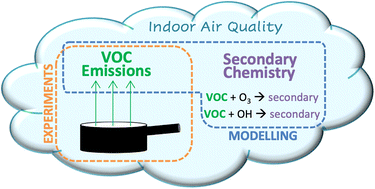Environ. Sci.: Processes Impacts, 2023, 25,1532-1548
DOI: 10.1039/D3EM00167A, Paper
DOI: 10.1039/D3EM00167A, Paper
 Open Access
Open Access This article is licensed under a Creative Commons Attribution 3.0 Unported Licence.
This article is licensed under a Creative Commons Attribution 3.0 Unported Licence.Helen L. Davies, Catherine O'Leary, Terry Dillon, David R. Shaw, Marvin Shaw, Archit Mehra, Gavin Phillips, Nicola Carslaw
Volatile organic compounds (VOCs) emitted during cooking affect indoor air quality. Here, experiments and simulations were carried out to determine VOC emission rates and the factors driving the formation of harmful products via secondary chemistry.
The content of this RSS Feed (c) The Royal Society of Chemistry
Volatile organic compounds (VOCs) emitted during cooking affect indoor air quality. Here, experiments and simulations were carried out to determine VOC emission rates and the factors driving the formation of harmful products via secondary chemistry.
The content of this RSS Feed (c) The Royal Society of Chemistry

